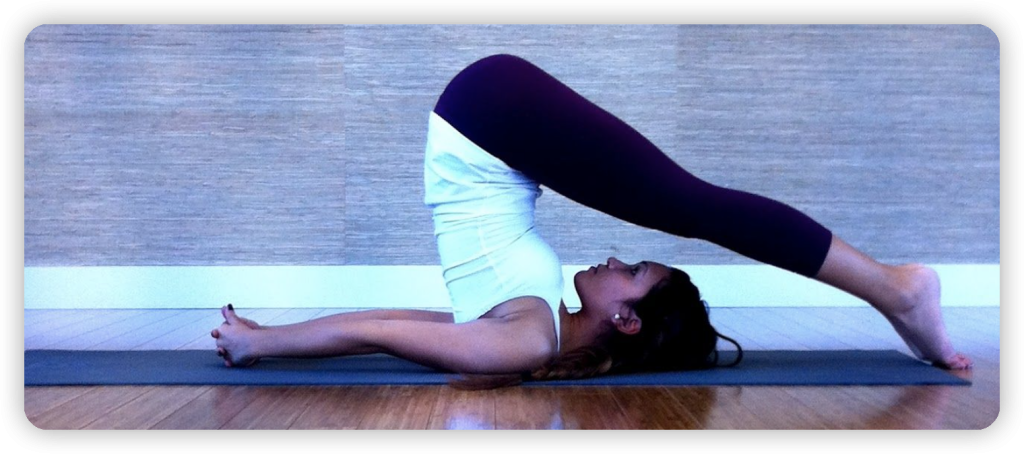
Halasana, or the Plow Pose, is an inversion that helps stretch and strengthen the back, shoulders, and neck. It’s a pose that benefits from being approached with caution, especially for beginners or those with specific contraindications.
Here’s a concise step-by-step guide for the Plow Pose:
- Starting Position: Begin in a supported shoulder stand (Sarvangasana), with your legs upright and your hands supporting your back.
- Move into Plow: Exhale, and using your core, gently lower your legs over your head towards the ground.
- Leg Positioning: Once your toes touch the floor, stop pushing your feet further. Keep your legs fully extended.
- Adjust Torso: Lift your tailbone and thighs up, grounding down through your arms and shoulders. Pull your inner thighs into your abdomen. Lengthen your torso and move your chin slightly away from your chest.
- Hand Placement: Once you’re stable, extend your arms out on the floor, interlacing your fingers. Press the arms actively into the ground.
- Hold: Breathe steadily. Initially, hold for 30 seconds, but you can gradually increase the duration up to 5 minutes as you become more experienced and comfortable.
- Release: To exit the pose, place your hands on your back for support, lift your legs back up into a supported shoulder stand. Slowly roll down, vertebra by vertebra, using your hands for support. Finally, lay flat in a corpse pose (Savasana) and relax.
Benefits:
- Stretches and strengthens the spine and shoulders.
- Stimulates the abdominal organs and thyroid.
- Can help alleviate backache, headache, insomnia, and sinusitis.
Modifications:
- For those with high blood pressure or asthma: Position the feet on a wall or a chair instead of bringing them all the way to the ground.
Cautions:
- Those with neck injuries, diarrhea, or menstruating should avoid this pose.
- Ensure you keep your head straight and avoid turning it side to side to prevent any strain.
Due to the nature of inversions and the potential strain on the neck, it’s crucial to be well-informed and cautious. If you’re new to this pose, practicing under the guidance of a certified yoga instructor can be incredibly beneficial. They can ensure proper alignment, offer adjustments, and recommend props or modifications as needed.

